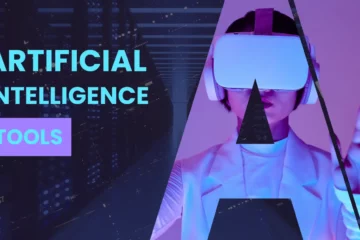I’m going to kick things off by charting the current state of AI in the content creation landscape. We’ve come a long way since the early days of computer-generated formulas and simple automated responses. Now, AI-driven tools are capable of crafting anything from blog posts to full-length articles, and the evolution isn’t slowing down.
This isn’t just about the technology itself; it’s also about understanding the milestones that brought us here. Over the past few years, AI has rapidly progressed, fueled by advancements in machine learning, natural language processing, and computational power. These breakthroughs have allowed AI to not only mimic human writing but often enhance it with data-driven insights.
And what an impact these tools have had on the content industry! They’re shifting the balance, enabling writers to produce more content at a faster rate, while also diversifying the type of content that can be generated. It’s a transformation that’s both exciting and a bit daunting, as it paves the way for a new era of content production.
You’re going to find out about how this technology works and the types of content it can create as we move into the next section. It’s a deep dive into the mechanics behind AI-powered content generation, cutting through the jargon to give you a clear picture of how these tools function.
AI-Powered Content Generation Tools:
- SEOWriting AI Review: Fast & Easy Content Creation
- The Benefits Of Using An AI Website Builder For WordPress
- AI-Powered Content Generation The Future Of The Web?
- How To Build An AI-Powered WordPress Website
- Revolutionize Your Website The Ultimate AI Plugins for WordPress
Understanding AI-Powered Content Generation
I’m going to break down exactly what AI-powered content generation is. In simple terms, it’s the use of artificial intelligence technology to create content. This can be anything from articles and blog posts to social media updates and even books. AI does this by drawing on vast data sets and sophisticated algorithms to mimic human writing styles.
Now, how do these AI tools pull it off? They analyze existing content across the web, learn patterns and structures, and then apply natural language processing (NLP) to generate new pieces. NLP is the critical technology here, and it’s constantly evolving, making AI-written content more and more indistinguishable from that written by humans.
It’s not just plain text. AI can also produce rich content with images, videos, and other multimedia elements. This versatility opens doors for businesses and creatives alike to diversify the types of content they share with their audiences.
So, what’s the next logical question? You might be wondering how AI stacks up to human writers. I’ll guide you through the array of benefits that AI brings to the table, balancing creativity with analytics to supercharge content production. In the next section, we’ll explore how leveraging AI can be a game-changer for anyone looking to amplify their content and reach wider audiences more effectively.

The Benefits of Using AI for Content Production
I’m here to help you understand just how much AI can revolutionize the way we handle content production. First off, the speed at which AI can generate content is staggering. We’re talking about minutes, sometimes even seconds, to draft articles, summaries, and reports that might have taken a human content creator hours to produce.
Now, it’s not all about speed. I really want to emphasize the quality improvement AI often brings to the table. These tools come armed with vast amounts of data and can, therefore, ensure that the content is not only well-written but also rich in information and stylistically diverse.
Another key advantage is the ability to scale your content strategy. Whether you’re running a blog, managing a company’s content, or publishing news, AI allows you to keep up with the constant demand for fresh content. This aspect is particularly valuable in content marketing, where staying relevant and consistent is crucial.
But wait, there’s more. Imagine having tools that analyze your content’s performance and suggest improvements? That’s a reality with AI. By harnessing AI’s capability to evaluate engagement and impact, creators can adapt their strategies and content pieces for better reach and conversion rates.
Ethical Considerations and Challenges
Now, you’re going to find out about a crucial aspect of AI-powered content generation that often sparks heated debates: the ethical considerations. This isn’t just about creating content quickly; it’s also about acknowledging the responsibilities that come with it.
Let’s tackle the topic of authenticity first. With AI becoming increasingly adept at mimicking human writing, distinguishing between man-made and machine-generated content is getting tougher. I’m here to help you understand the consequences of this blurry line. For instance, there’s the risk of misinformation and the unsettling potential for fake news proliferation.
In my opinion, originality in content production is non-negotiable. AI-generated content must be scrutinized to ensure that it doesn’t merely copy existing materials but instead offers fresh perspectives. At the heart of this issue, there’s concern over intellectual property rights and the preservation of artistic integrity.
Then there’s the topic of bias. AI algorithms are trained on vast datasets, and if those datasets carry any biases, the AI will likely reflect them in the content it produces. To combat this, it’s crucial to use diverse training data and continuously monitor AI outputs for any unintended prejudice.
And what about the impact on jobs? There’s a lot of opportunity in using AI for content creation, but understandably, many worry about its effects on employment within the creative sectors. It’s a delicate balance to strike, ensuring AI becomes a tool that augments human talent, rather than replacing it.
The question of ethics extends beyond creation and into consumption. Should readers always be informed when they’re reading AI-generated content? Transparency fosters trust, and disclosing the use of AI could become a standard practice respected by both content creators and consumers.
Choose something that resonates with you when you decide how to approach these ethical considerations. Each of these challenges—authenticity, bias, job security, and transparency—calls for meticulous attention. As we prepare to integrate AI into our content strategies, we need to be proactive in addressing these issues.
Best Practices for Integrating AI into Content Strategies

I’m going to let you in on a secret: integrating AI into your content strategy doesn’t have to be daunting. In fact, when done right, it can redefine productivity and creative potential. Don’t worry too much about AI replacing your job; think of it as a tool that enhances what you’re already doing exceptionally well.
Let’s talk about complementing human creativity with AI. The trick here is to use AI to handle mundane tasks, giving you more room to flex your creative muscles. Imagine having an AI draft content for you, and then you swoop in to add that personal touch, refining phrases and infusing your brand’s voice.
Maintenance of editorial oversight is crucial. Just don’t focus too much on perfection on the first pass. AI can sometimes get things wrong, and that’s where you come in. Scrutinize the AI’s work, fact-check, and ensure it aligns with your brand values and message. It’s your job to mold the raw material AI provides into a polished gem.
If you want to wield AI’s full potential, think of it as a teammate. Build strategies for balanced AI-human collaboration. Use AI to generate ideas, conduct research, and even optimize for SEO. Then, your human team can add the nuances that only a human touch can provide.
What about quality control? That’s the strategy I like to leverage. Always have a system in place to review and edit AI-generated content. Choose something that resonates with you, whether it’s a checklist, a peer review process, or a set of quality benchmarks.
Remember that your first attempt at integrating AI into your content strategy doesn’t need to be your last. You can always adjust your approach down the road. The goal is to start, learn, and iterate.
Looking Ahead: The Future of AI-Generated Content
While we’ve already seen remarkable strides in the landscape of AI-generated content, it’s clear that we’re just scratching the surface. In the coming years, we’re going to witness even more sophisticated AI models that don’t just mimic human writing but bring their own inventive flair to the process.
One exciting direction is the development of AI that can accurately mirror an individual’s writing style, making personalized content creation not only plausible but also easily scalable. Imagine AI that can craft personalized email responses or even write full-length articles that sound just like you.
As far as predictions go, experts are looking at AI not just as a tool for generating content but also as a partner in the creative process. Content creators who today may worry about being replaced by AI will likely find that it amplifies their capabilities. By handling heavy-lifting tasks, AI will free up creators to focus on strategy, story-telling, and engaging their audience in new ways.
It’s crucial, however, to stay vigilant about the ethical implications. As we entrust more of our content production to AI, keeping a human touch to ensure accuracy, empathy, and deep understanding will become more important than ever. So, let’s continue to embrace the possibilities of AI with prudence and a forward-thinking mindset.
Ultimately, the success of AI in content generation will hinge on whether it can consistently deliver not just competent but truly compelling content. In all likelihood, the creators who thrive will be those who learn to harness the strengths of AI while infusing their human intuition and creativity. And while nobody can predict the future with absolute certainty, there’s real excitement in not knowing just how far AI can take us in the realm of content creation.
AI Powered WordPress Websites


